TechRadar Verdict
Having clearly watched from the sidelines for years, Huawei latest has exactly the kind of sensibility we’ve wanted from a luxury laptop. The Huawei MateBook 13 does what any flagship laptop can do – and more – for the same price or even less. For that, the Huawei MateBook 13 is our Best in Class laptop in 2019.
Pros
- +
Full Intel Core processing
- +
Discrete Nvidia graphics
- +
Webcam now on top
- +
Excellent value
Cons
- -
Relatively low memory
- -
No Thunderbolt 3
Why you can trust TechRadar
Two-minute review
The Huawei MateBook 13 is another excellent release from Huawei, providing performance on par or better than many laptops in its class and at a lower price. In addition, it looks and feels at least as good as a 2018 MacBook Air.
If that sounds familiar, that’s because we said a similar thing in the MateBook X Pro review. Even though the Huawei MateBook X Pro was an almost perfect device, Huawei managed to improve upon it with this portable. And it managed to do it at a cheaper price.
Here's how the Huawei ban in the US is going
Huawei has 16-inch MagicBook Pro product ready for the next MacBook Pro
That price, unfortunately, means some corners have been cut. Most noticeably, there’s no Thunderbolt 3 here. And, that’s one of the most crucial ports for professional users on the road, especially those who need fast data transfer speeds. It would be nice to have more RAM capacity as well.
The Huawei MateBook 13 is still a worthy successor to the MateBook X Pro and carries that torch as one of the best value flagship laptops available. Additionally, it comes with some seriously impressive battery life, letting you get a full day’s worth of work done without needing a charge.
Simply put, you’re getting more power and versatility from inside a laptop that’s just as attractive as – if not more so than – the competition.
Huawei has clearly watched the laptop space from the sidelines for years, swooping in with exactly the kind of sensibility we’ve been looking for from a luxury laptop. The Huawei MateBook 13 does what every other flagship laptop can do – and more – often for less money than most.
Price and availability
- Launched early January 2019 after a CES 2019 debut
- Intel Core i5/256GB SSD: $999 (about £785, AU$1,403)
- Intel Core i7/Nvidia MX150/512GB SSD: $1,299 (about £1,020, AU$1,825)

CPU: 1.8GHz Intel Core i7-8565U (quad-core, 8MB cache, up to 4.1GHz)
Graphics: Intel UHD Graphics 620; Nvidia GeForce MX150 (2GB GDDR5)
RAM: 8GB DDR3 (2,133MHz)
Screen: 13-inch, 1440p (2,160 x 1,440, IPS, 300 nits, 1,000:1 contrast, 100% sRGB, 3:2 aspect) touch display
Storage: 512GB SSD
Ports: 2 x USB-C 3.1, headset jack
Connectivity: 802.11ac Wi-Fi, Bluetooth 4.1
Camera: HD (720p, 0.9MP) webcam
Weight: 2.87 pounds (1.3kg)
Size: 11.26 x 8.31 x 0.59 inches (286 x 211 x 14.9mm; W x D x H)
Huawei is selling two configurations of the MateBook 13 laptop, an entry-grade version and a high-end version, but both contain the same 13-inch, 2,560 x 1,440 (220 pixels per inch) touchscreen in a 3:2 aspect ratio and 8GB of LPDDR3 memory as well as a fingerprint reader embedded into the power button.
Sign up for breaking news, reviews, opinion, top tech deals, and more.
Otherwise, the more approachable model includes an 8th-generation Intel Core i5 processor with integrated graphics and 256GB of solid-state storage (SSD) for $999 (about £785, AU$1,403) to start. Meanwhile, a $1,299 (about £1,020, AU$1,825) model with an Intel Core i7 processor and Nvidia MX150 discrete graphics chip inside as well as a 512GB SSD is available.
Both models also include a helpful USB-C dock in the box as well as one free year of Microsoft Office 365 Personal. This pricing smartly undercuts Apple’s latest MacBook Air by 100 bucks, and remains quite competitive with other competing Ultrabooks, namely the Dell XPS 13.
It all comes down to how the MateBook 13 part configurations compare, largely offering the same or more power than either option for less. Namely, neither the XPS 13 nor the MacBook Air offer discrete graphics. As low-power as the Nvidia MX 150 might be, it gives this laptop a clear competitive advantage in video rendering and gaming.
Both models are available on Amazon and Newegg in the US at the time of writing, with wider retail availability come February. Huawei has not yet disclosed exact UK and Australian pricing or international availability.
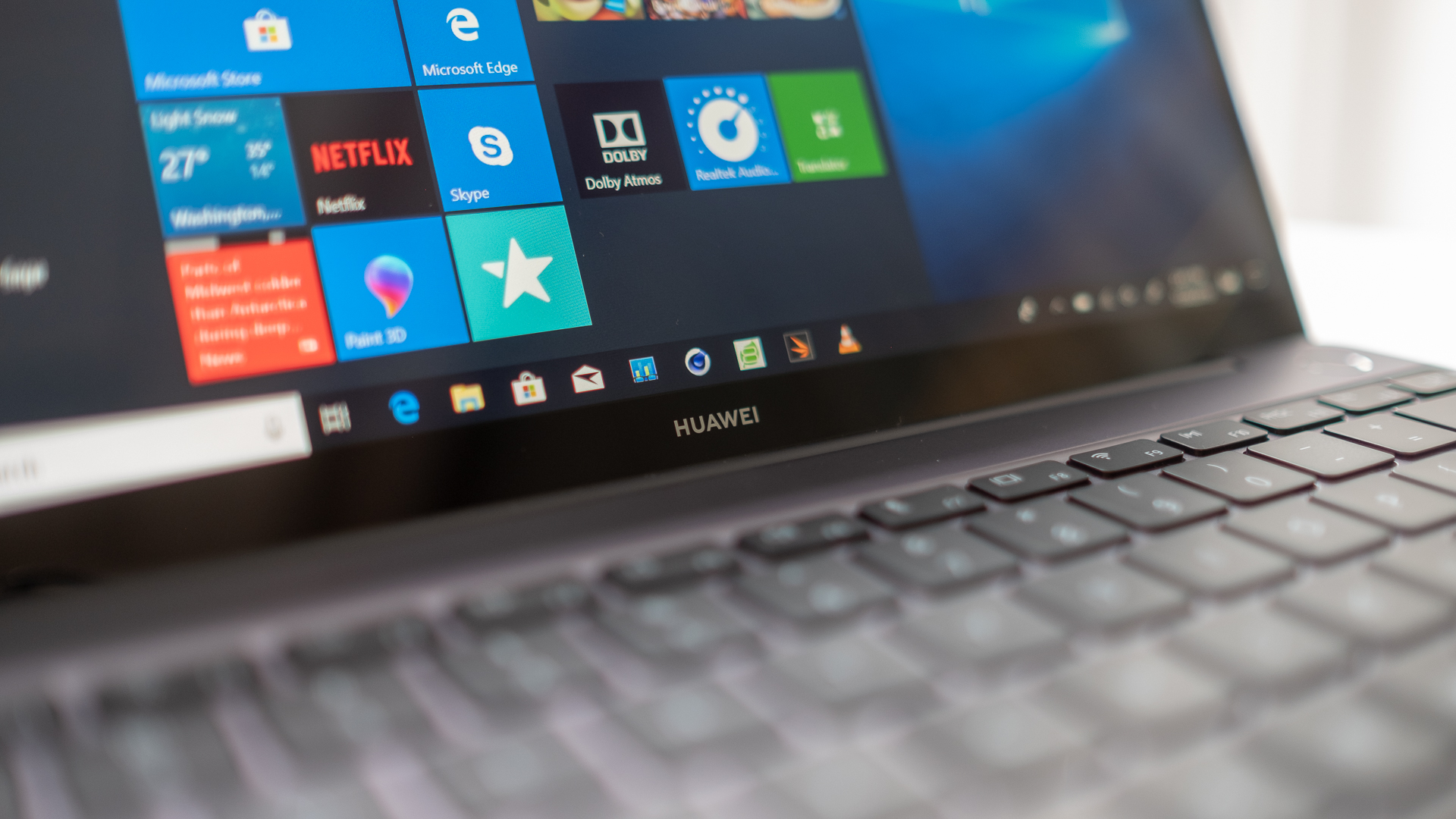
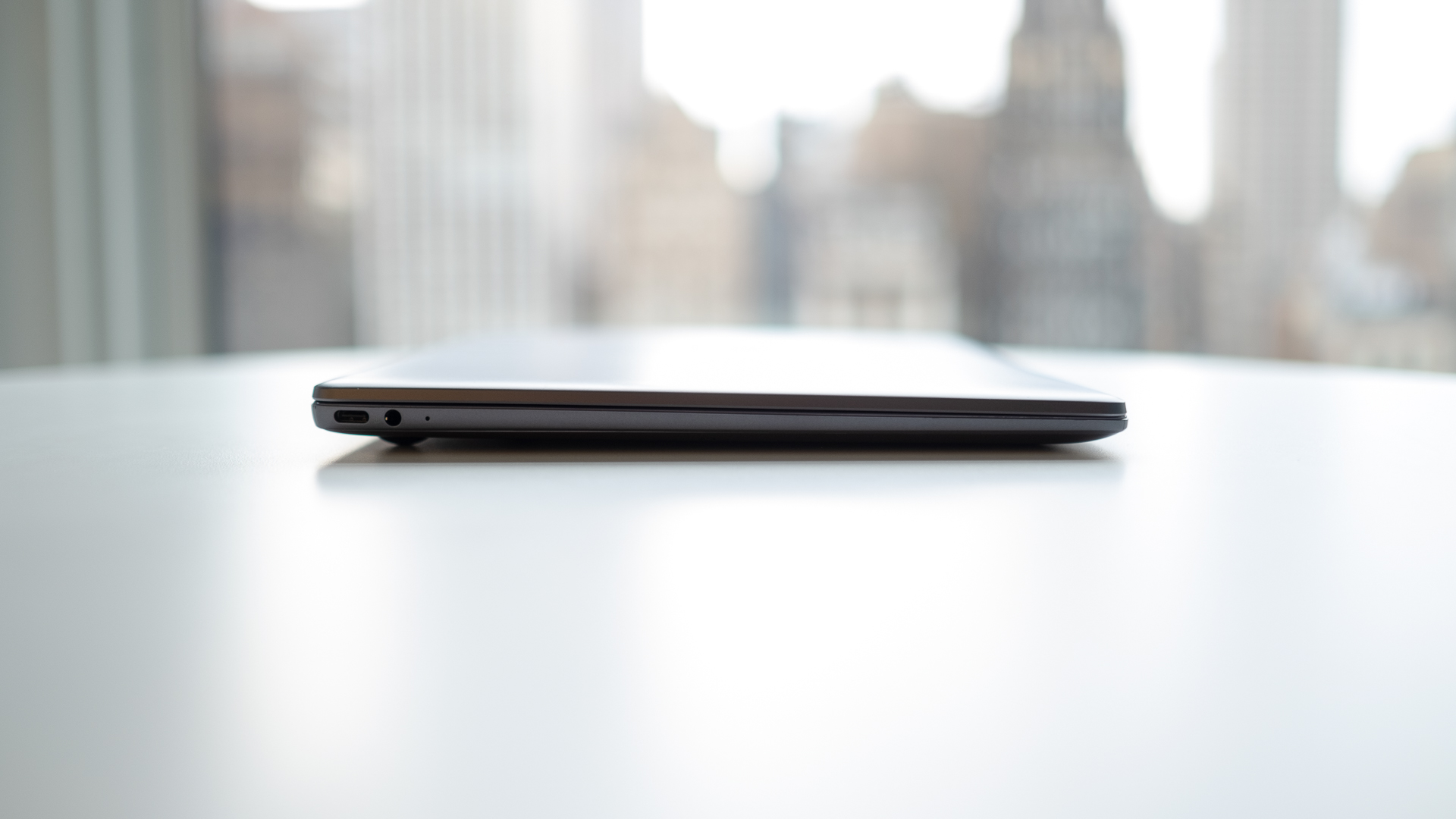
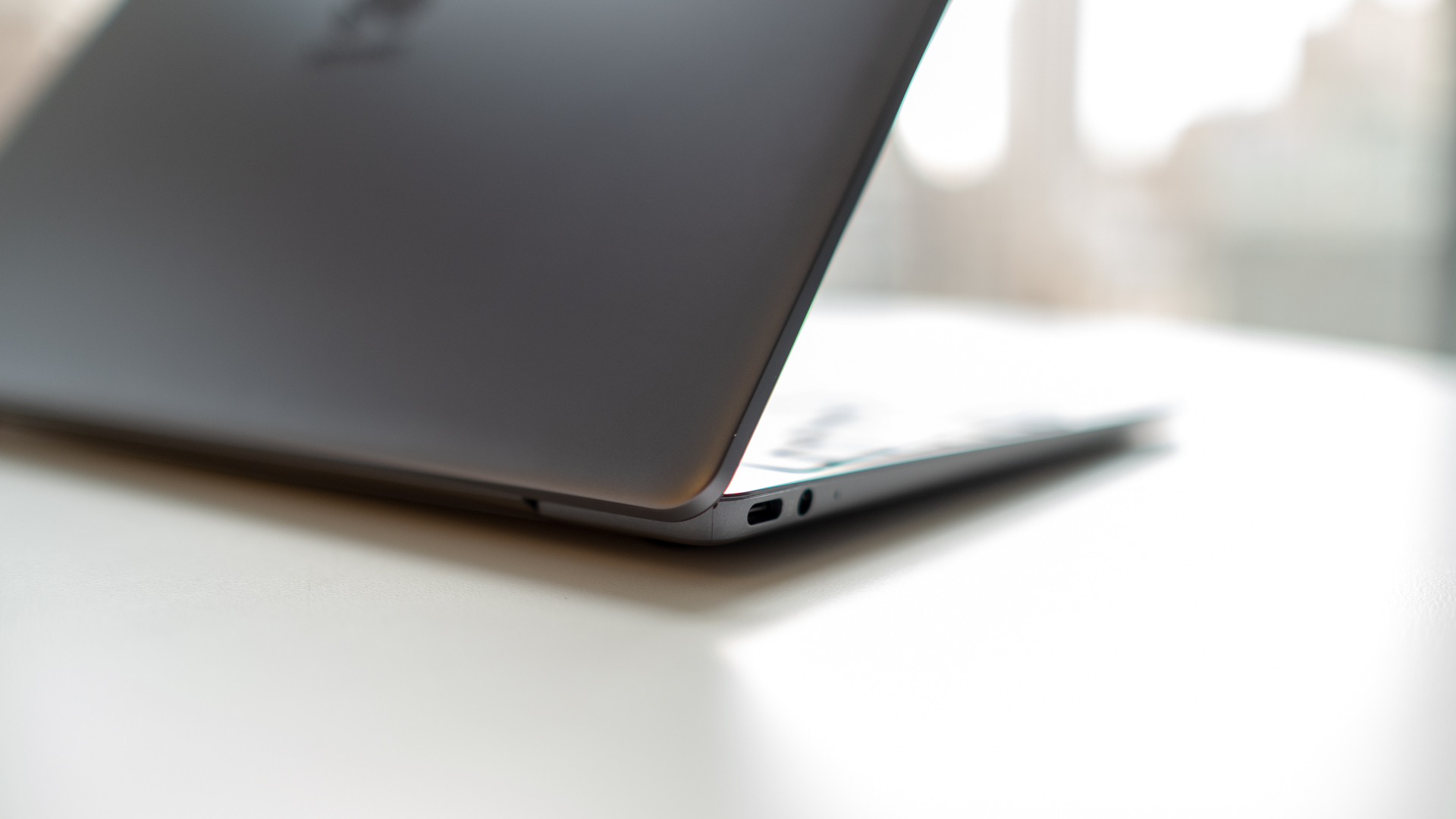
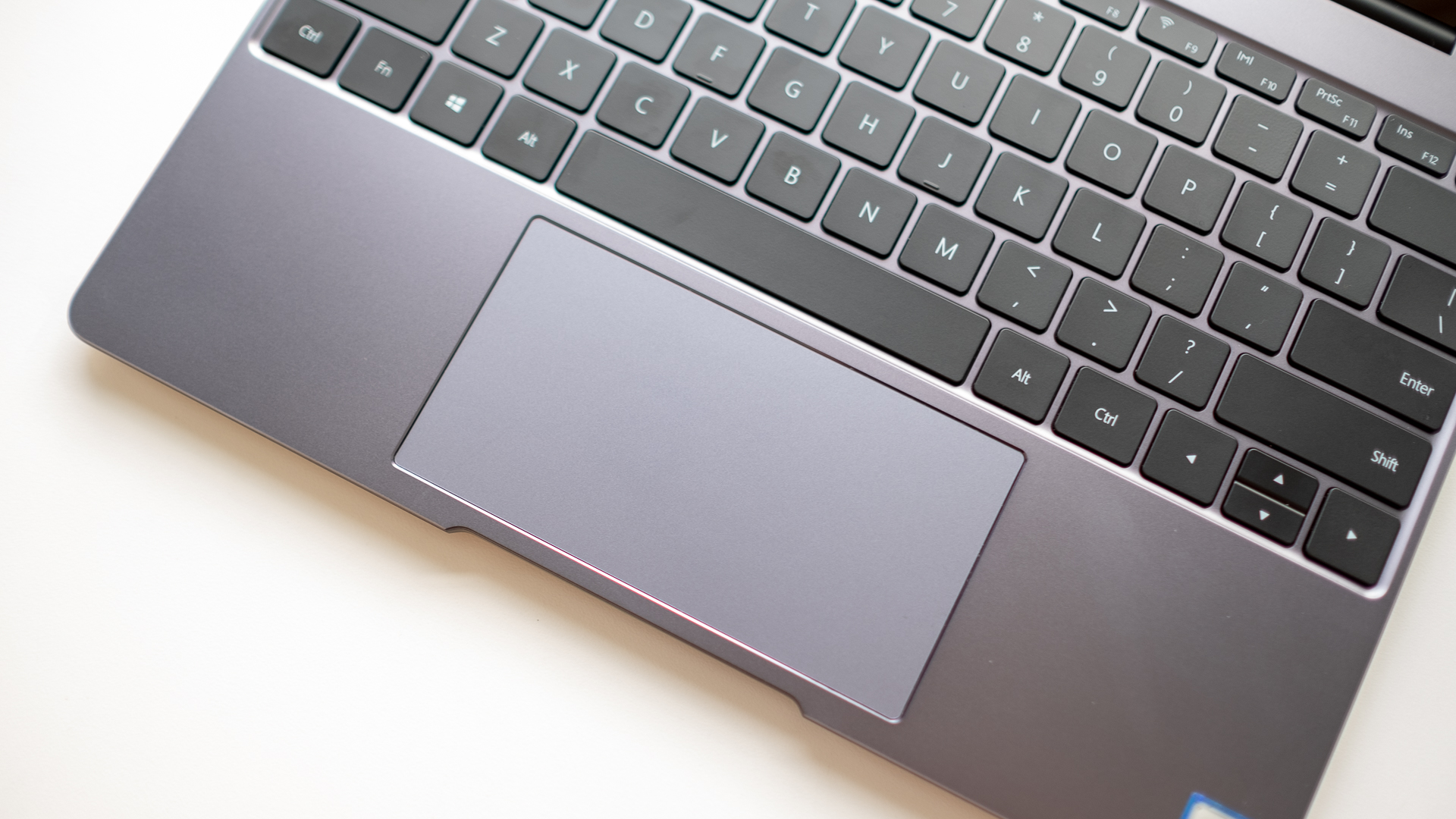
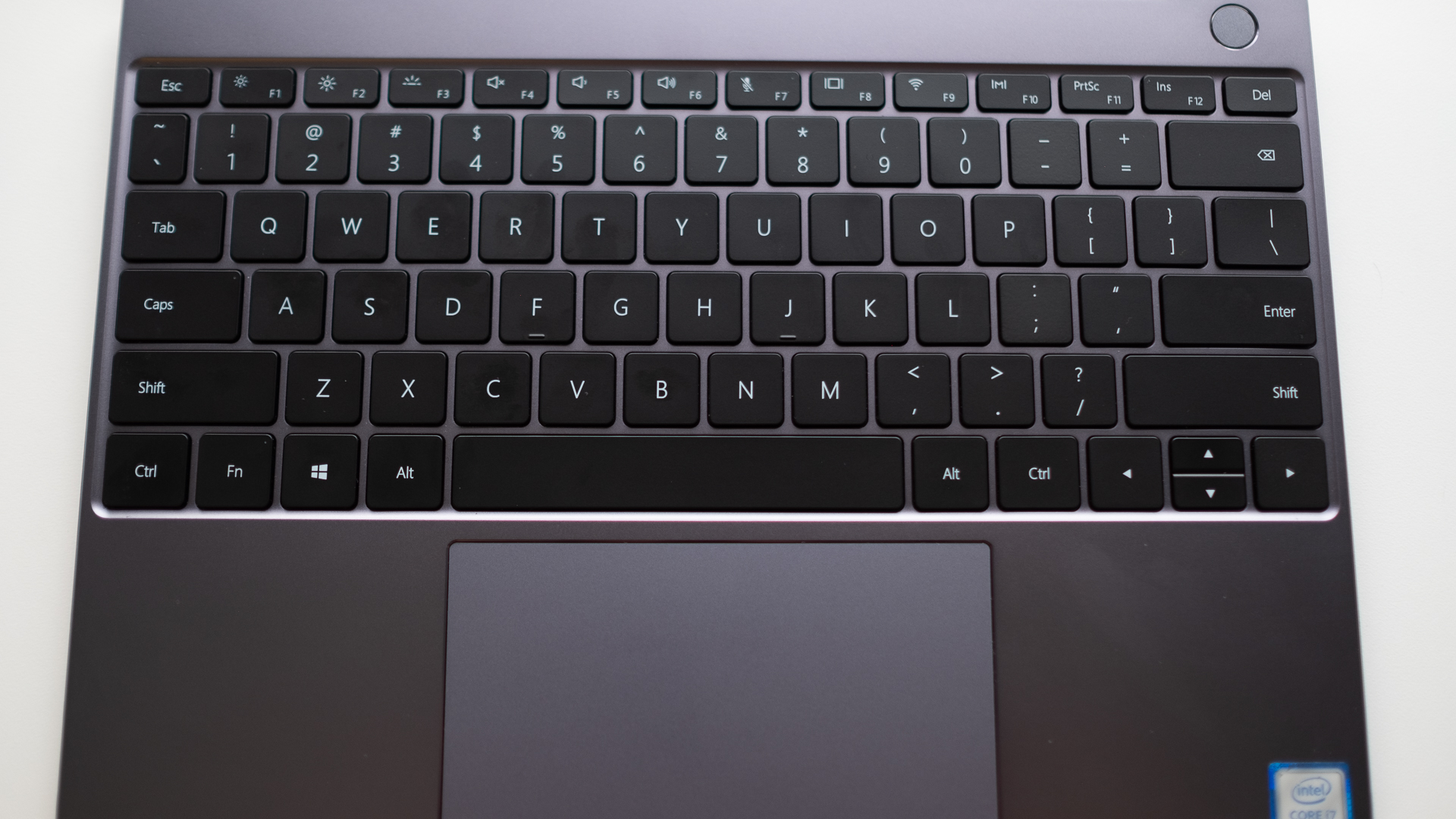
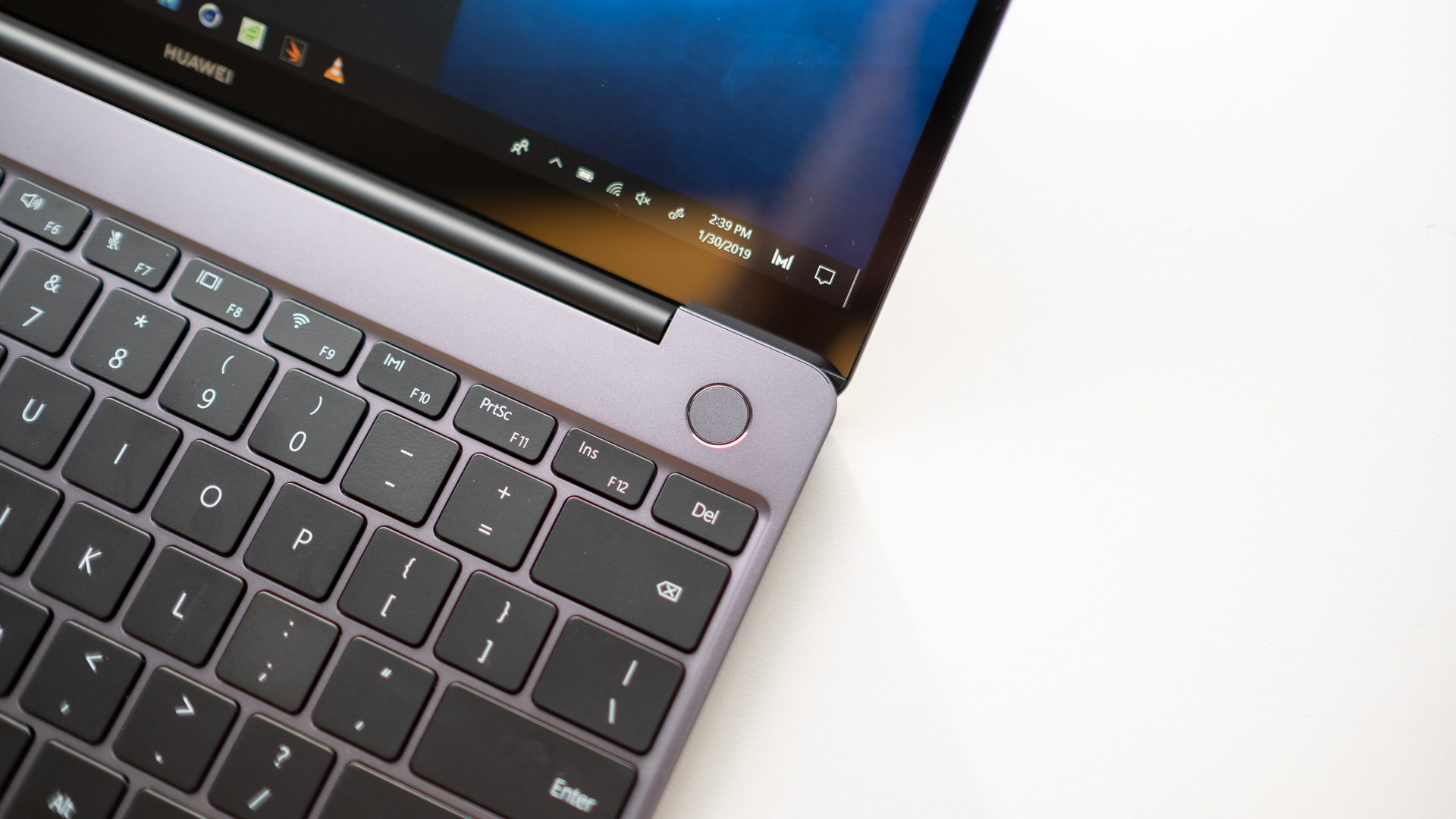


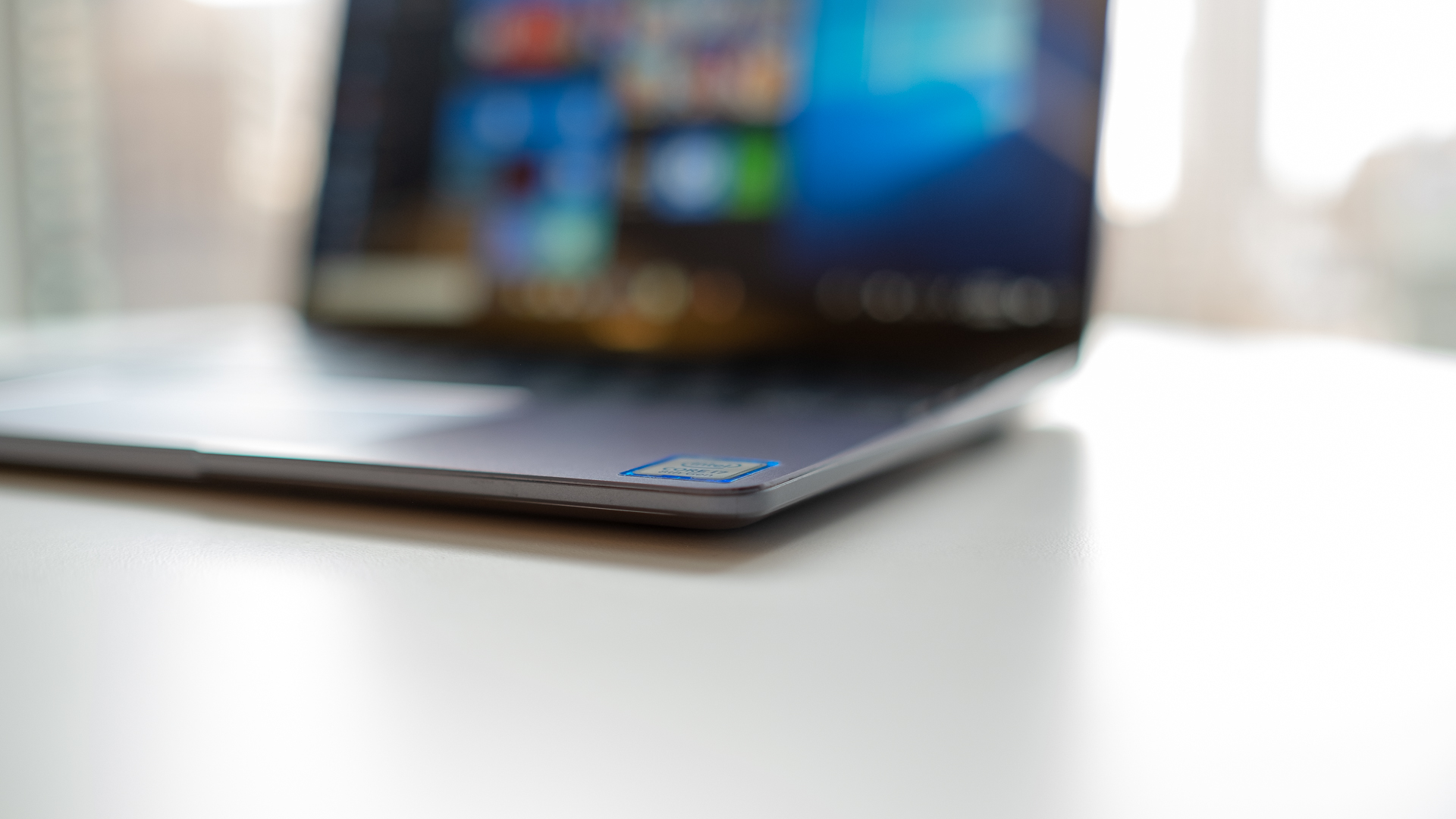
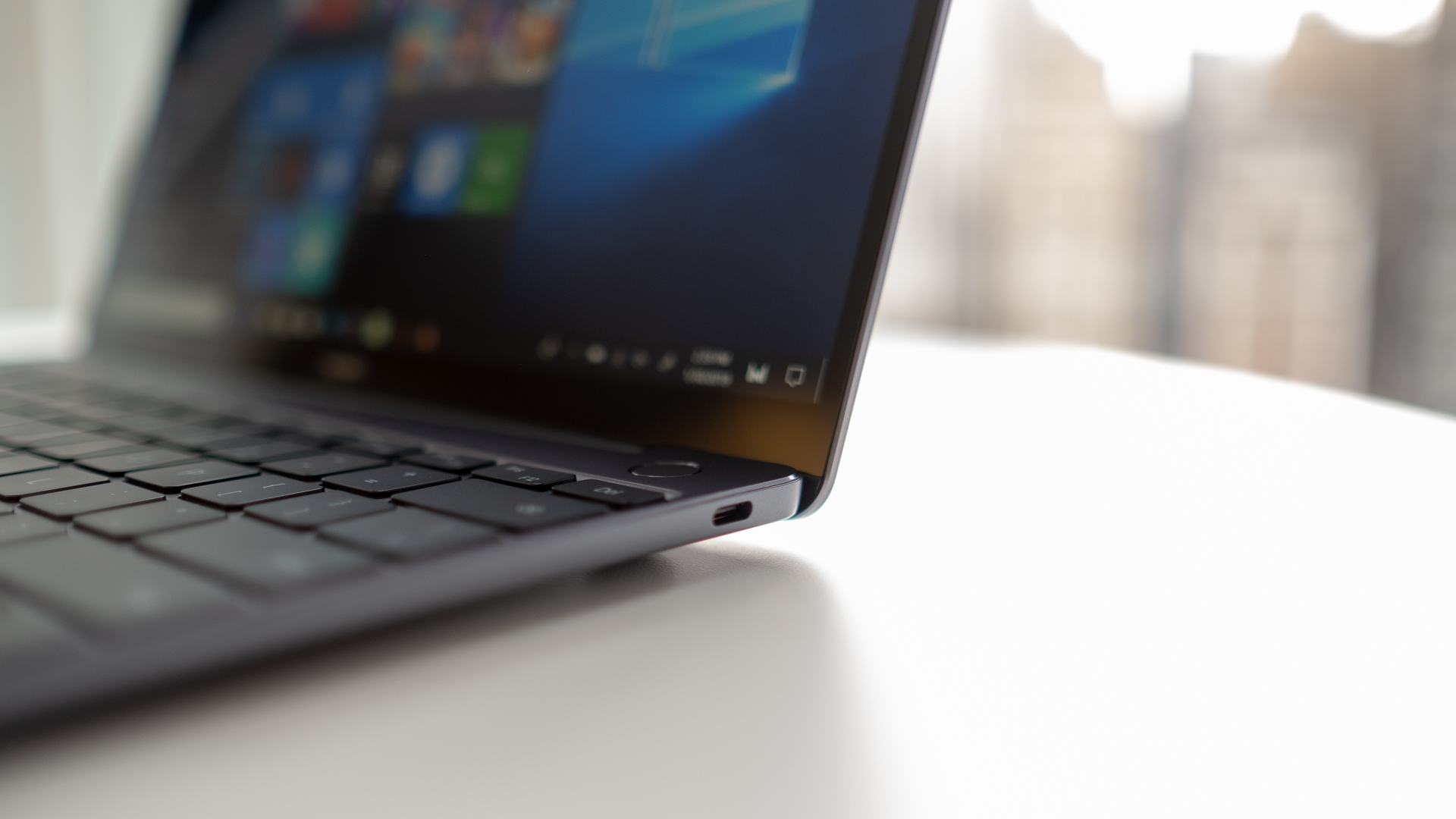
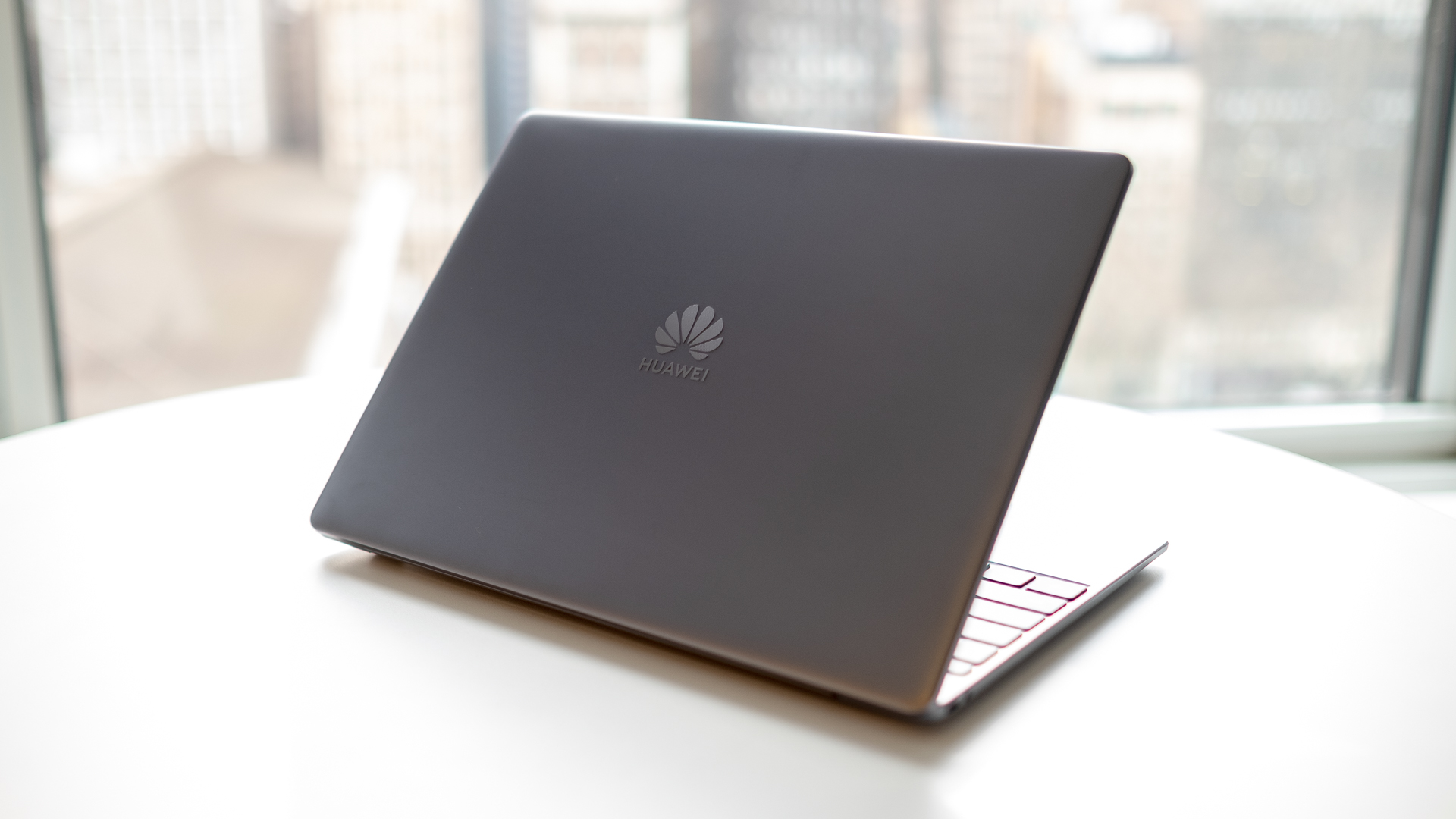
Design and display
- Gorgeous Space Gray or Mystic Silver aluminum frame
- Just 2.87 pounds and 0.59 inches thin
- Vibrant 1440p touchscreen with 100% sRGB coverage
You wouldn’t be wrong to think of the MateBook 13 as a further refinement of Huawei’s best-in-class MateBook X Pro of 2018, but the company intends to sell both separately. You see, the MateBook 13 looks nearly identical to the X Pro, only slightly smaller.
This laptop is fitted into the same aluminum body as before in your choice of a Space Gray or Mystic Silver color option. Open the laptop, however, and you’ll notice one key difference: the webcam has moved – again.
While the webcam was cleverly hidden beneath the keyboard in the X Pro, Huawei has done this MateBook right with a webcam resting above the display. However, it’s rated for a mere 0.9-megapixels at 720p resolution, so it’s not going to make you look amazing online.
Measuring just 0.59 inches (14.9mm) thin and weighing a mere 2.87 pounds (1.3kg), the MateBook 13 is narrowly heavier and actually – just by a hair – thinner than the latest MacBook Air. That’s mighty impressive for a laptop that contains a full-fat Intel mobile processor as well as a dedicated graphics chip.
Equally as impressive is the keyboard and touchpad on offer here, with plenty of key travel at 1.2mm and the punchy, forceful feedback that we need to type fast. Likewise, the Microsoft Precision touchpad is also a delight to use as well as wide and spacious, though it’s notably missing a smooth glass coating.
Now, if you enjoyed the touchscreen display on the X Pro, you’ll love it all over again on the MateBook 13. While a touch smaller now at a straight 13 inches on the diagonal, the screen still puts out a 1440p picture at 100% of the sRGB color gamut – and its touch digitizer is as snappy as ever.
Couple that with a 1,000:1 contrast ratio and up to 300 nits of brightness, and you have the makings of a once-again excellent display. However, the 3:2 aspect ratio allows for more content to fit on the screen vertically, but that means thicker bars above and below your full-screen videos.
While this is essentially the same design as last year’s flagship Huawei laptop, we can’t help but appreciate the refinements that the company has made to that design at almost every level.

Performance
- Impressive multi-core numbers reveal a beast at general computing tasks
- Higher power Nvidia MX150 graphics than most
- Stronger thermal designs edge out similarly-equipped competitors
The Huawei MateBook 13 looks like the usual iterative update to its predecessor both on paper and in practice. However, Huawei managed to eke even more graphical power out of the same processor this year with improved thermals and 25% faster fans inside, allowing the graphics chip to use 25 watts of the laptop’s overall power draw – most laptops equipped with the Nvidia MX150 run a 15W, lower-spec version of the chip. These fans also help keep the laptop surprisingly cool under load compared to similarly thin and light models.
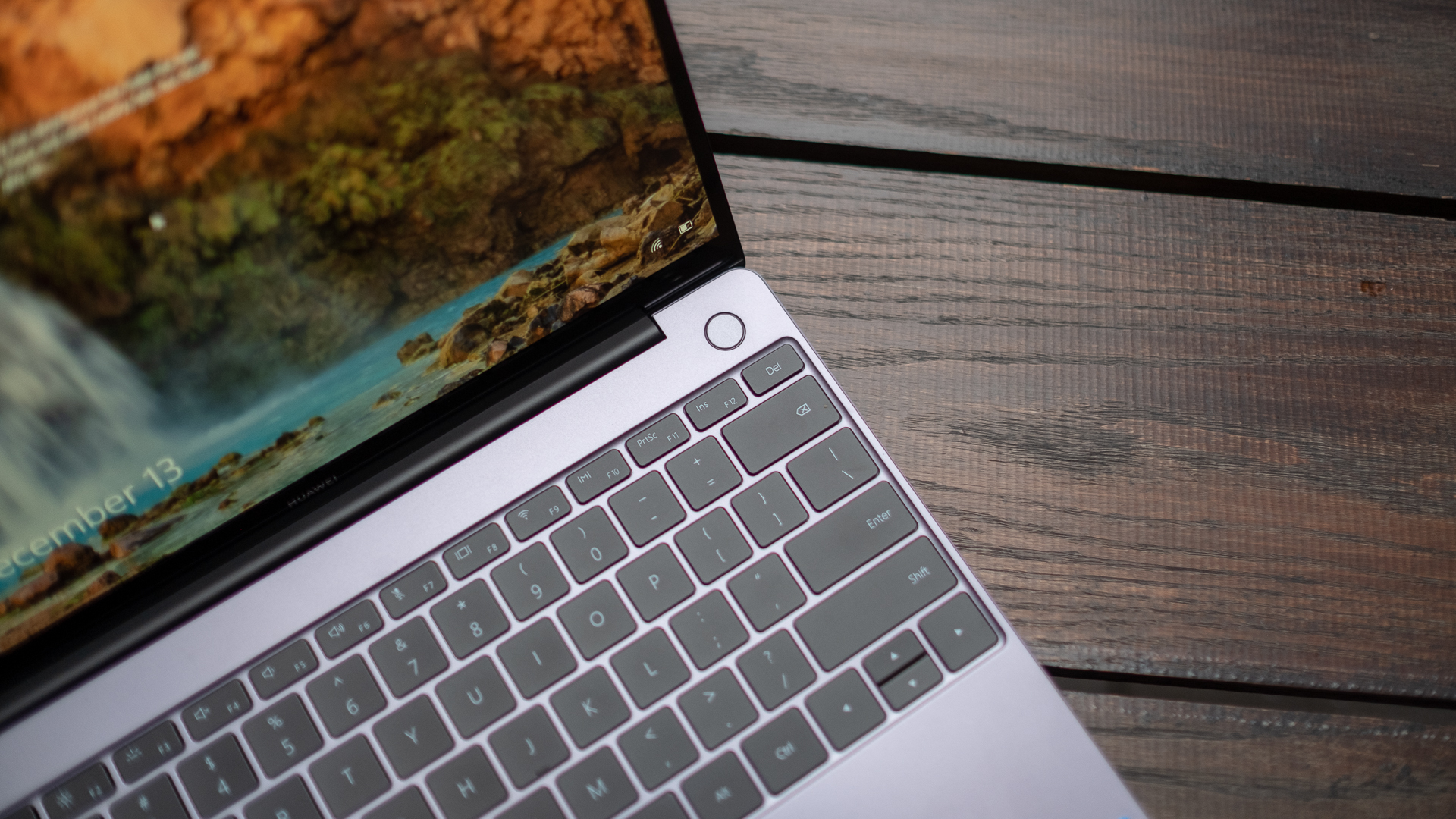
Here’s how the Huawei MateBook 13 performed in our suite of benchmark tests:
3DMark Sky Diver: 11,030; Fire Strike: 3,251; Time Spy: 1,177
Cinebench CPU: 642 points; Graphics: 103 fps
GeekBench 4: 5,303 (single-core); 17,336 (multi-core)
PCMark 8 (Home Test): 3,555 points
PCMark 8 Battery Life: 2 hours and 17 minutes
Battery Life (TechRadar movie test): 8 hours and 18 minutes
So, not only is this laptop much better at graphics and moderately better than its predecessor at general computing, it is that much better than key competitors that have not made similar moves. All the while, this is a laptop that will tear through general use and will be ready to bat on more difficult tasks, too.
So as not to belabor the point with too many numbers, let’s look at one simple benchmarks to demonstrate the MateBook 13’s lead over key competitors: Geekbench 4. This processor simulation benchmark tests for almost every use case.
The MateBook 13 scored more than 17,000 points in the multi-core test, which is just 500 points more than the previous model and 400 points more than the Dell XPS 13. Meanwhile, the 2018 MacBook Air didn’t come within 10,000 points of the MateBook 13’s score. Why is this?
It’s more than likely Huawei’s thermal work that’s to thank for its advantages over the previous Huawei and Dell models, considering the Dell and Huawei MateBook 13 were tested on the very same processor. A processor with more headroom will perform better to a point, after all.
However, the massive discrepancy between Huawei and Apple’s laptops is because the latter uses a fanless, Y-series Intel processor with a lower frequency and two fewer processing cores. After all of Apple’s compromises, the MateBook 13 ends up thinner anyway – go figure.
Now, while the Huawei MateBook 13 includes discrete graphics – that are, again, more powerful compared to last year’s flagship model – don’t expect to do much more than casual to light mainstream gaming on this machine (this isn't a full-power gaming laptop). Shadow of the Tomb Raider wouldn’t even run on the laptop, and Total War: Warhammer 2 couldn’t get past 30 frames per second on average at the lowest settings.
That said, for the odd Hearthstone session between the presentation slide decks you’re working on, this laptop will do just fine.

Battery life
- Outlasts Dell XPS 13 with 4K display at video playback
- Still bested by the 2018 MacBook Air in all tests
- Fast-charging USB-C power helps shore up any battery deficiencies
As for longevity, Huawei promises up to 9.6 hours of local 1080p video playback from the MateBook 13, and that’s the only figure it provides. Luckily for Huawei, our 1080p video playback test reported an impressively close 8 hours and 18 minutes, narrowly outlasting a Dell XPS 13 with a 4K display.
Of course, the MacBook Air remains battery king at a whopping 10 hours and 30 minutes of playback time, but this is nevertheless impressive for a 2019 flagship laptop. The MateBook 13 has enough juice to last on most trips without having to charge, and that’s what matters.
That said, we’ve recorded a PCMark 8 battery test number that’s well below Huawei’s promise and well below the average for a laptop of this class. This could be due to a number of factors, namely a sizable reduction in battery capacity compared to the MateBook X Pro up against graphics running at a higher frequency than that model and competitors.
Ultimately, we’re confident in the MateBook 13’s ability to last for several hours on a charge in either scenario. Throw in USB-C fast charging that can give you 2.5 hours of use in 15 minutes, and you’re looking at an excellent laptop for people constantly traveling.

Software and other features
- Generally bloatware free with only one pre-installed app
- Huawei PC Manager catches drivers Windows 10 Update might miss
- Fingerprint reader in power button means super-fast, one-press login
Huawei is generally minimalistic about the amount of bloatware on its machines, and the MateBook 13 isn’t any different. This laptop contains a single additional app: Huawei PC Manager. This app scans your computer’s hardware for any issues or possible driver updates that Windows 10 has missed. You can then install those updates with one button press.
Beyond software, the only true hardware feature to speak of is the fingerprint reader. Integrated into the laptop’s power button, this is an incredibly speedy and convenient method of biometric login via Windows Hello. You won’t wait for longer than a second after powering on your laptop before you’re looking at your Windows 10 desktop – that’s fast.

Who's it For?
Those who want a little bit of everything
With the flash of flagship laptops paired with a bit of the power of gaming laptops, the MateBook 13 is an ideal laptop for folks that are looking for a laptop that can do a little bit of everything. A jack of all trades, if you will. You'll get both a taste of the power in gaming laptops and all of the panache of flagship mainstream notebooks from a single device.
Frequent travelers
The MateBook 13 is one of the most ideal laptops out there for people that travel frequently whether for work or leisure. Weighing just 2.87 pounds and measuring nearly half an inch thin, this laptop will barely be felt in your backpack and offer plenty of power regardless.
MacBook expatriates
It's no secret that Apple has lost a lot of face in the laptop game, thanks to now several debacles revolving around divisive designs and faulty keyboards. The MateBook 13 is the anti-MacBook if there ever was one, offering much of the same luxury hardware experience through the lens of Windows 10.
Who's it Not For
Folks on a budget
If you're looking to get the utmost performance out of your laptop for as little cash as possible, the MateBook 13 is not the device for you. Much of the MateBook 13 price tag is wrapped up in its premium build quality and luxury features, much of which you can forget about when worried about price.
PC gamers
Despite the discrete Nvidia MX graphics inside, do not fool this laptop for one that can handle the latest PC games. The graphics inside are enough to get you by at middling settings in the latest games, but likely at less-than-playable frame rates. Looking to get a match of Hearthstone in between meetings? Fine – just don't expect much more.
DIY types
If you're the kind of person that expects to change every part of your laptop over its lifespan to eke that much more time and power out of it, know that the MateBook 13 isn't all that upgradeable. Like most thin-and-light laptops of its kind, upgrading much beyond the memory in this laptop will be difficult if not impossible, not to mention that its thresholds for memory and storage capacity aren't exactly enormous.
- Check out our Huawei promo codes for our latest Huawei deals and discounts.
The Competition
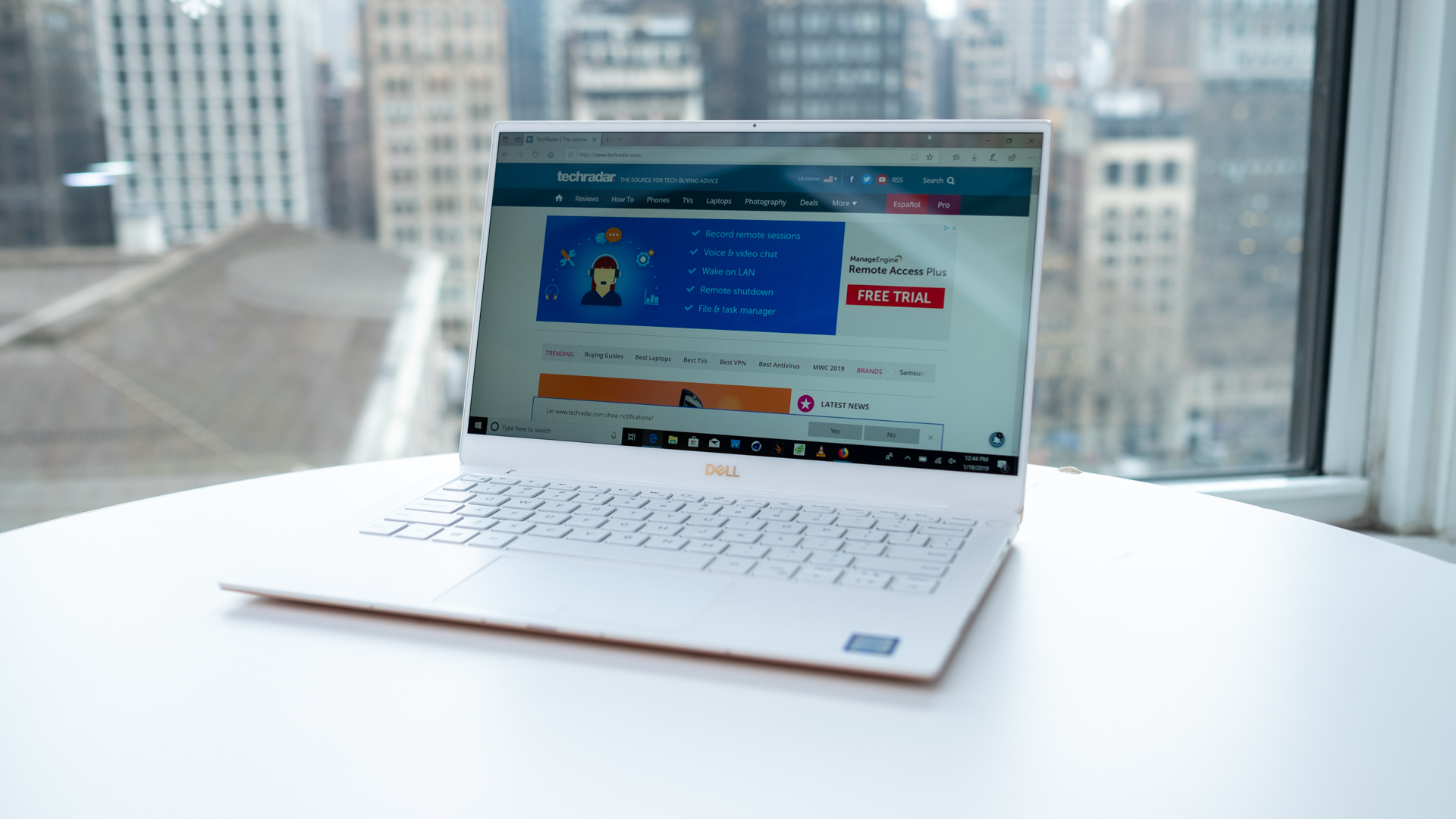
Dell XPS 13
Dell has gone and made just about every possible improvement to the XPS 13 in 2019. The webcam is in the proper position and no worse in quality for what it took to get there. Better yet, battery life has seen a sizable improvement as well.
This has happened all the while everything else about the laptop has maintained its storied, incredible quality, from the chassis design to the power profile of the components inside. This is the same laptop as last year, only better.
However, compared against the Huawei MateBook 13, the XPS 13 still struggles to compete on value. Simply put, you can get better hardware in all regards for less out of the Huawei laptop in both of its available configurations. While it’s not quite the ‘Best in Class’ laptop for 2019, we still consider the Dell XPS 13 among the best laptops in the world.
Read our Dell XPS 13 review
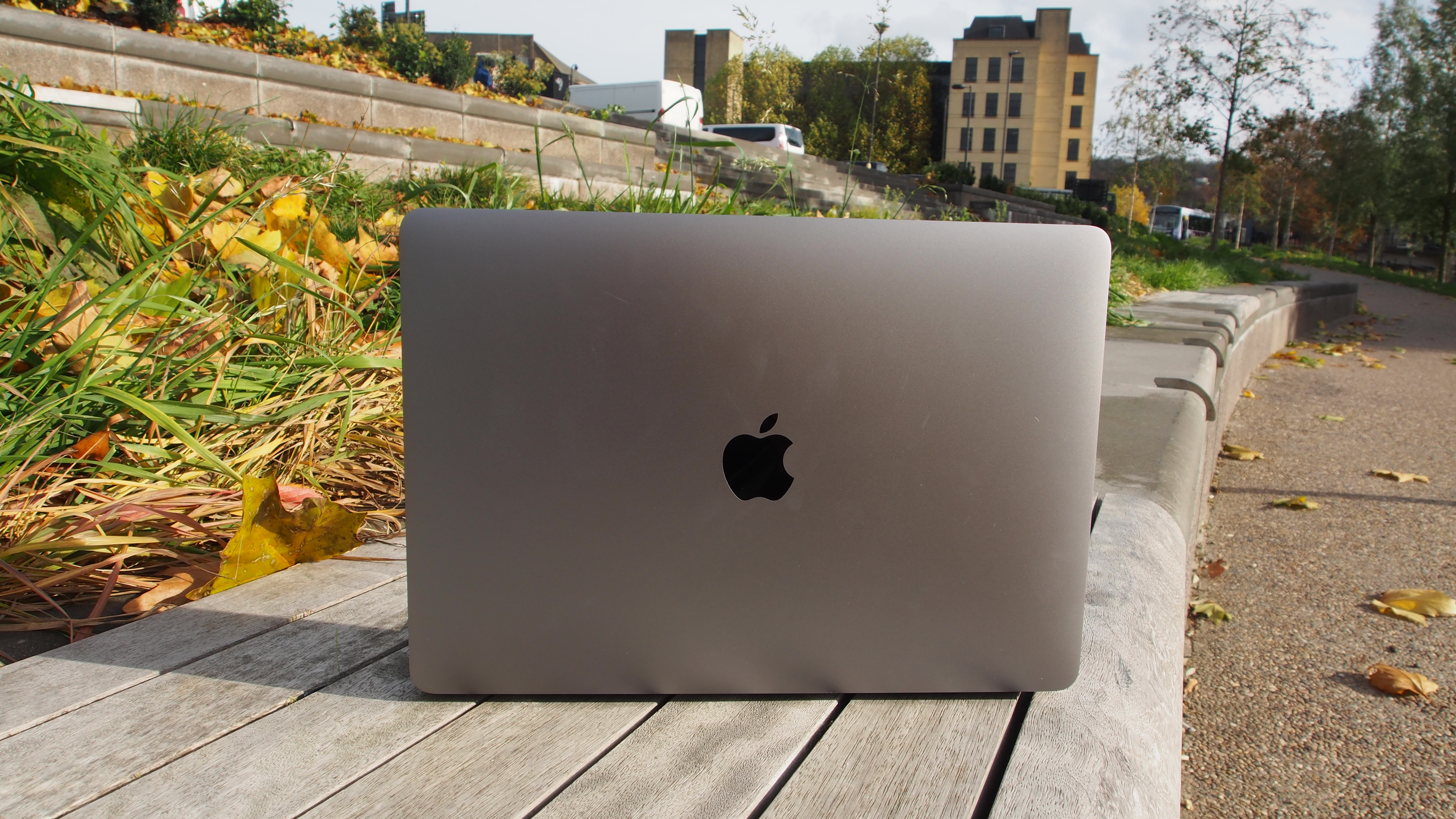
Apple MacBook Air (2018)
The latest MacBook Air is either going to delight or disappoint you, depending on what you’re after in a laptop. It’s undeniably a great bit of kit that’s nicely put together (as we’ve come to expect from Apple), but it won’t be for everyone.
Apple’s MacBook Air line of laptops has a huge and committed following, and if you’re a fan of Apple’s lightweight laptop, then you will love the MacBook Air (2018). It improves on a number of key areas - especially the stunning new screen - as well as being lighter and smaller than ever before.
If you have a MacBook Air that's a few years old now, then this update should make you happy.
However, if you’re hoping for a substantially more powerful device compared to previous models - or laptops in the same price range - then you’re going to be disappointed. A laptop in 2018 with a dual-core processor running at 1.6GHz isn’t going to set the world on fire, especially at this price point, where rival machines are running faster processors with more cores.
Also, if you want more storage, you’re going to be paying a premium, unless you use an external hard drive. Oh, and don’t think about using a microSD to boost storage - this year’s MacBook Air doesn’t support it.
In the end, the MacBook Air isn’t likely to make many converts for people thinking of switching from Windows to Mac. However, for the committed fanbase who have been waiting for a new MacBook Air, they’ll find the lightest and most powerful Air ever made. And for many people, that will be more than enough.
Read our Apple MacBook Air (2018) review
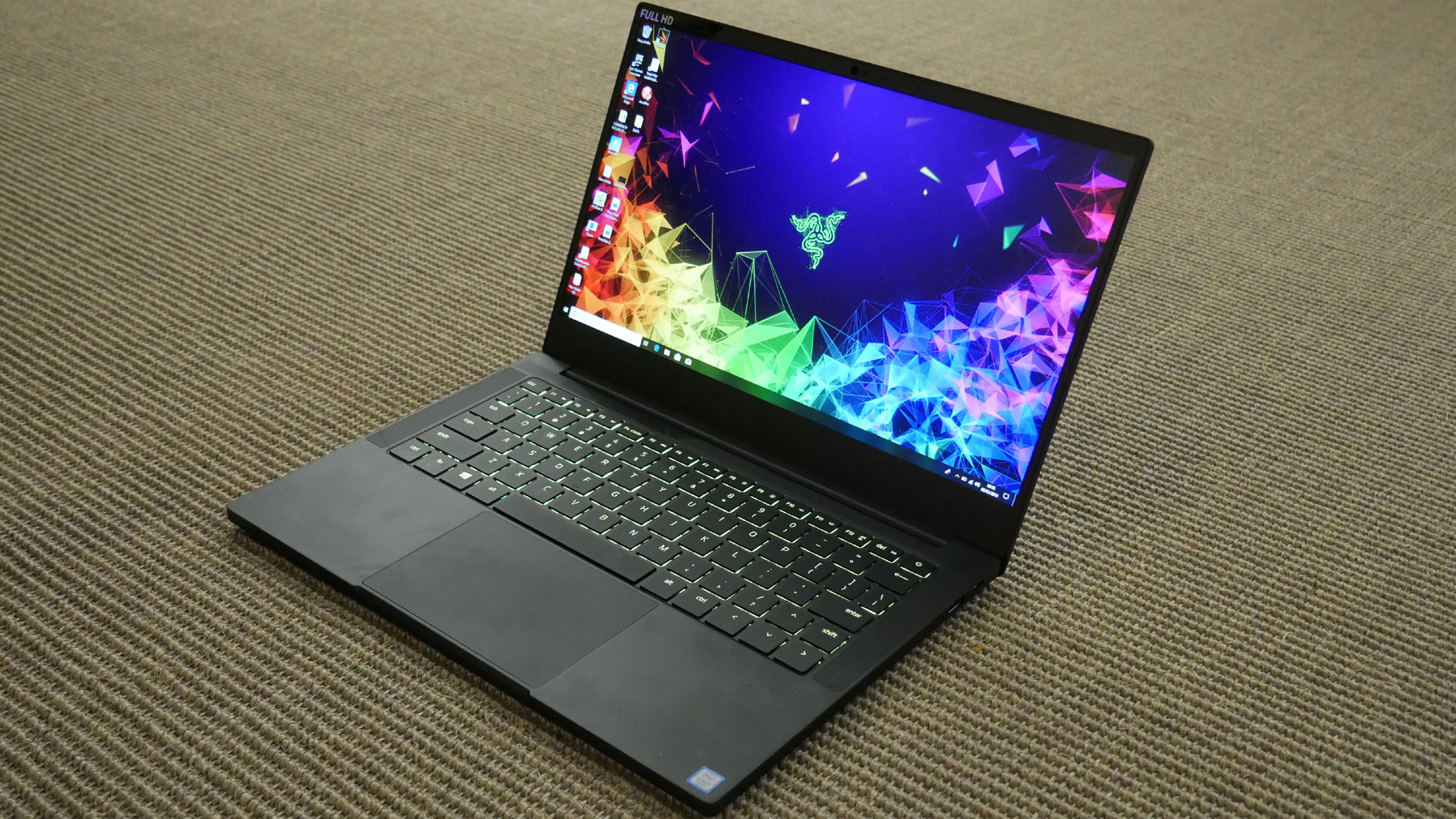
Razer Blade Stealth 13
Make no mistake, this is one very appealing laptop. It looks great, feels expensive and performs well in many regards.
The main problem is the combination of price and remit. Razer isn’t pitching the Stealth 13 as an out-and-out gaming rig, but its mediocre performance in that regard is still a little disappointing if entirely predictable.
Meanwhile, at this price point a wide range of much higher performing gaming laptops are available. The caveat is that those laptops are all larger 15-inch systems.
All of which means the Stealth 13 is a darned desirable as a luxury Ultrabook. Think of it in those terms and the moderate gaming ability as an extra rather than a core feature and its an appealing if pricey overall package.
Read our Razer Blade Stealth 13 review

Joe Osborne is the Senior Technology Editor at Insider Inc. His role is to leads the technology coverage team for the Business Insider Shopping team, facilitating expert reviews, comprehensive buying guides, snap deals news and more. Previously, Joe was TechRadar's US computing editor, leading reviews of everything from gaming PCs to internal components and accessories. In his spare time, Joe is a renowned Dungeons and Dragons dungeon master – and arguably the nicest man in tech.
